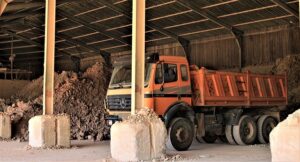Pressure-rated water heater tanks are safe, reliable hot water solutions for homes and commercial use, built to stringent safety standards with advanced materials and manufacturing techniques. They store hot water without constant energy consumption, meet rigorous testing and certification processes, and incorporate features like corrosion resistance, insulation, and automatic shut-off valves. Regular maintenance is key to longevity, focusing on ventilation, leaks, and proper installation components. Choosing the right capacity for residential needs ensures efficient hot water management and reduced utility costs.
Pressure-rated water heater tanks are designed to withstand elevated pressures, ensuring safe and efficient hot water supply. This article delves into the critical aspects of these tanks, from understanding their operation to exploring key safety standards, materials, testing methods, and performance guarantees. By examining these components, we uncover the factors that contribute to the longevity and reliability of pressure-rated water heater tanks, providing essential insights for consumers and professionals alike.
- Understanding Pressure-Rated Water Heater Tanks
- Key Safety Standards for Water Heater Tanks
- Materials and Construction Techniques
- Testing and Certification Processes
- Ensuring Longevity and Reliable Performance
Understanding Pressure-Rated Water Heater Tanks

Pressure-rated water heater tanks are designed to store and heat water while withstanding elevated pressures, ensuring safe and reliable hot water supply in various applications. These tanks are built to stringent safety standards, incorporating robust materials and advanced manufacturing techniques to withstand potential pressure bursts or leaks. Unlike traditional water heaters that rely on continuous heating, pressure-rated tanks utilize a storage system, allowing hot water to be readily available without constant energy consumption.
This type of water heater tank is ideal for residential and commercial settings, offering both efficiency and safety. The tank capacity varies based on the specific needs, with options ranging from smaller units suitable for single-family homes to larger ones designed for multi-unit buildings. Whether powered by gas or electricity, these tanks contribute to energy conservation by providing hot water on demand, making them a popular choice for modern water storage systems.
Key Safety Standards for Water Heater Tanks

When it comes to pressure-rated water heater tanks, adhering to stringent safety standards is non-negotiable. Key Safety Standards for Water Heater Tanks include rigorous testing and certification processes that ensure the tank’s structural integrity, preventing failures and potential hazards. These standards encompass factors like material quality, construction methods, pressure ratings, and corrosion resistance. Both traditional water heaters and modern storage water heaters must meet these criteria to guarantee safe operation.
Electric tank heaters, gas tank heaters, and hot water storage systems are all subject to comprehensive regulations that cover everything from tank capacity and ventilation requirements to temperature controls and safety devices. These stringent measures ensure that residential water tanks not only provide efficient hot water but also do so safely, protecting users from potential risks associated with high-pressure systems.
Materials and Construction Techniques

Modern pressure-rated water heater tanks are crafted with safety and durability in mind, utilizing advanced materials and innovative construction techniques. The heart of these tanks lies in their robust material composition, often a blend of high-quality stainless steel or glass-lined steel. These materials not only ensure resistance to corrosion but also maintain the integrity of the tank’s structure under extreme pressure.
Construction involves precise welding and seamless joints, minimizing the risk of leaks. Advanced insulation technologies are incorporated to regulate temperature and reduce heat loss, enhancing energy efficiency. Electric or gas tank heaters, fitted with modern safety features like automatic shut-off valves, further safeguard against potential hazards. This meticulous attention to detail and adherence to stringent safety standards have transformed traditional water heaters into reliable and secure storage water heaters, catering to residential needs while prioritizing user safety and hot water storage.
Testing and Certification Processes

The journey from manufacturing to installation involves rigorous testing and certification for pressure-rated water heater tanks. These processes are designed to ensure that every tank meets stringent safety standards, providing peace of mind for consumers. Independent laboratories conduct a series of tests, including hydrostatic pressure tests, to verify the tank’s structural integrity and ability to withstand varying pressure levels without failure.
Certification bodies then review the test results and manufacturing processes to issue approvals, such as UL (Underwriters Laboratories) or ETL (Intertek), marking the tanks as safe for use in homes and commercial settings. This includes evaluating factors like material quality, welding procedures, and construction techniques specific to both gas tank heaters and electric tank heaters. For residential water tanks and larger-capacity hot water storage systems, these certifications are non-negotiable, ensuring traditional water heaters operate reliably and safely across various applications.
Ensuring Longevity and Reliable Performance

To ensure longevity and reliable performance from a pressure-rated water heater tank, regular maintenance is key. This includes checking for any signs of corrosion or leaks, as well as ensuring proper ventilation to prevent buildup of harmful gases. Using high-quality, industry-certified components during installation can significantly enhance the tank’s durability.
Selecting a water heater tank with adequate tank capacity tailored to your residential needs is crucial. Both gas tank heaters and electric tank heaters come with their unique advantages, so choosing between them depends on factors like energy efficiency, cost, and ease of use. Modern storage water heaters often incorporate advanced features such as insulation and temperature controls to optimize hot water storage and distribution, thereby enhancing overall home comfort while reducing utility bills.
Pressure-rated water heater tanks, crafted with advanced materials and rigorous testing, stand as a testament to enhanced safety standards. By adhering to stringent regulations, these tanks ensure longevity and reliable performance, providing peace of mind for homeowners. Understanding the intricacies of their construction and certification processes is key to appreciating the modern water heater tank’s role in our daily lives.






